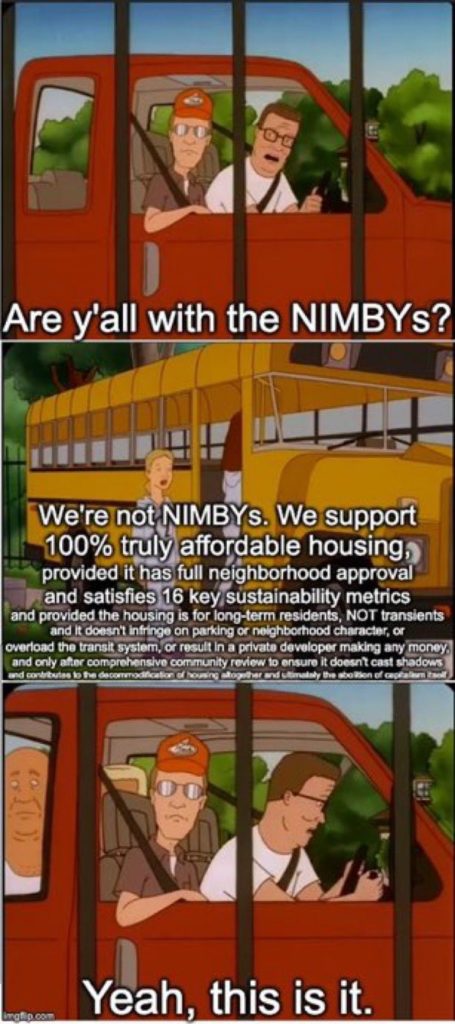NIMBYism is anti-labor

As Hamilton Nolan observes, organized labor needs to follow the lead of trade unions in California, which have finally recognized that restrictions on housing that protect disproportionately wealthy incumbent homeowners at the expense of everyone else are fundamentally anti-worker. The reason for this is clear: when demand for housing outsrtips supply. even in.a robust market for labor wage gains are all taken by landlords (or, if you’re lucky, homeowners/developers):
Here is something that should mightily concern you: a new research paper by UC Berkeley economists finds that there are indeed (as anyone who has moved from a small town to a humming big city knows) earnings premiums for workers who live in certain areas—but “local housing costs at least fully offset local pay premiums.” That is to say they found that all or more of the extra money that a worker earns by moving into an economically strong area is clawed back by housing costs. That big raise that your union fought for in the last contract? Send that right on over to the landlord.
It doesn’t have to be this way. This is not some inevitable natural dynamic. It is the opposite. All things being equal, there would be tons of housing supply in high demand areas. Developers want to build as much housing as they can sell, where they can sell it, for the exact same reason that farmers will grow as much food as they can sell. The problem is that, in city after city, the supply of housing has failed to keep up with demand, largely because existing homeowners as a class prefer not to see a bunch of construction around them messing up their nice neighborhoods. Estimates of America’s total housing shortage range from three to seven million units (with much of the need in the cities where people want to live the most), but experts all agree that the amount we need to build is “enormous.”
This is a problem that hurts non-rich people more than anyone. That means it’s a labor problem. Working class renters suffer more than any other group. Landlords have a siphon directly into their wallets. They can demand high rents because people don’t have anywhere else to live because there are not enough units for people to live in. Vox last week published a good story by Rachel Cohen detailing how the Carpenters and other building trade unions in California slowly came around to the YIMBY position of supporting legislation to make it far easier to build housing in that unaffordable state—a position that clashed with the traditional position of the building trade unions, which focused exclusively on how much the construction would be of direct benefit to their members. Teachers unions and SEIU, representing low wage workers, are supporting the bills that make it easier to build as well. The president of the SEIU state council told Cohen, “Regardless of if you’re a janitor or a nurse or a health care worker or a home care worker, everyone overwhelmingly said the number one issue was housing affordability… We have members sleeping in their cars, who have big families sleeping in one-bedrooms, who are traveling hours and hours to get to work because they can’t afford to live near their jobs.”
Allowing more housing construction in high-demand areas is a huge positive-sum win — more people being able to live in cities they want to live in, good jobs and good wages, more purchasing power. It’s one of the top progressive priorities, and it’s good that YIMBYism is finally starting to win in multiple jurisdictions.


